- Joined
- Oct 9, 2007
- Messages
- 47,300 (7.53/day)
- Location
- Hyderabad, India
| System Name | RBMK-1000 |
|---|---|
| Processor | AMD Ryzen 7 5700G |
| Motherboard | ASUS ROG Strix B450-E Gaming |
| Cooling | DeepCool Gammax L240 V2 |
| Memory | 2x 8GB G.Skill Sniper X |
| Video Card(s) | Palit GeForce RTX 2080 SUPER GameRock |
| Storage | Western Digital Black NVMe 512GB |
| Display(s) | BenQ 1440p 60 Hz 27-inch |
| Case | Corsair Carbide 100R |
| Audio Device(s) | ASUS SupremeFX S1220A |
| Power Supply | Cooler Master MWE Gold 650W |
| Mouse | ASUS ROG Strix Impact |
| Keyboard | Gamdias Hermes E2 |
| Software | Windows 11 Pro |
Intel today launched its 12th Gen Core Processors with vPro. Released across the company's mobile and desktop product lines, these processors are targeted at pre-built commercial desktops and commercial notebooks that companies typically issue their employees, which come with a host of security and remote-management features suitable to a large corporate environment. With this generation, Intel is bringing vPro to even more market segments, including ultraportables designed under the Intel Evo banner; a new breed of enterprise-grade Chromebooks for businesses built entirely on the Chrome OS platform and cloud-based apps; and for the first time, an SMB version of vPro called vPro Essentials, which will make it to entry-level Core i5 processors with vPro.
Security, Productivity, and Future-readiness form the three areas in which Intel innovated for 12th Gen Core processors with vPro. The company added new capabilities for Threat Detection Technology, which can detect ransomware and supply-chain attacks, and can work with various endpoint security software. Intel Hardware Shield technology prevents attacks from "below" the software (below ring-0, or at the firmware, microcode, or hardware levels). This is achieved through hardware-accelerated virtualization and encryption of the entire software environment. Hardware-based protections extend to vPro Enterprise for Chrome.


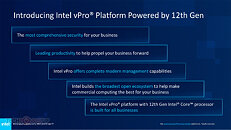
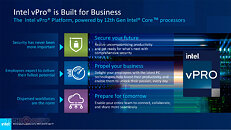
Virtualization features for 12th Gen vPro include VT-x and VT-d. The Trusted Execution Technology ensures a dynamic root of trust for software. The processors now feature interoperability between the processor and Windows OS on the low-level system software configuration. The company is also working to introduce VT-rp, which introduces hardware-accelerated encryption for virtualization. The Intel Boot Guard and BIOS Guard technologies help secure Windows boot with cryptographically-verifiable boot procedures laid out under Microsoft's Windows best security practices manual. Threat Detection and CET (control-flow enforcement) technologies significantly improve the heuristics of anti-virus software; and One Click remote-recovery or remote-erase.
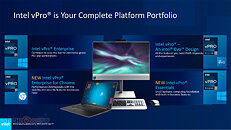
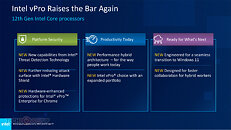
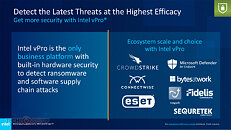

The core component of vPro continues to be Intel AMT (Active Management Technology), which provides proactive and reactive system maintenance over the Internet or corporate network; and DASH standard-based out-of-band management over Ethernet, Wi-Fi, and Thunderbolt 4.

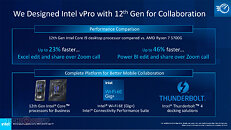
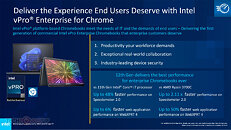

As for the processors themselves, Intel is targeting the 9 W, 15 W, 28 W, and 45 W commercial notebook segments. Over in the desktop side, the company is targeting 35 W, 65 W, and 125 W segments. These processors are practically identical to their non-vPro counterparts, but with the added vPro feature-set. On the desktop side of things, Intel is introducing the new 600-series Q chipsets.
The vPro Enterprise for Windows-eligible processors in the 9 W category are the Core i7-1260U, and i7-1240U. In the 15 W category, you get the i7-1265U and i5-1245U. The 28 W category sees i7-1280P, i7-1270P, and i5-1250P. The 45 W category includes the i9-12900H, i7-12800H, and i5-12600H. The 35 W desktop segment includes i9-12900T, i7-12700T, i5-12600T, and i5-12500T. The 65 W category includes the i9-12900, i7-12700, i5-12600, and i5-12500. Leading the pack are the i9-12900K, i7-12700K, and i5-12600K. Nearly all these parts, except the 125 W models, can be had under the vPro Essentials banner.

The vPro Enterprise for Chrome processors selection includes the i7-1260U and i7-1240U in the 9 W category, the i7-1265U and i7-1245U in the 15 W category; and i7-1270P, and i7-1250P in the 28 W category. All these processors have already been launched, it's only that commercial PC vendors can add the appropriate vPro layer on top that the organization or end-user opts for at the time of ordering. These processors are then paired with a Q670, Q670E, or B660 chipset motherboard (depending on the vPro tier opted).
The complete slide-deck follows.


















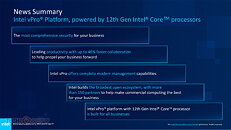




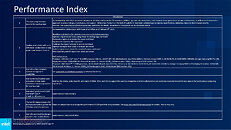




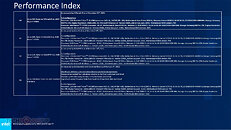
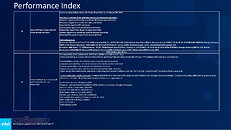




View at TechPowerUp Main Site
Security, Productivity, and Future-readiness form the three areas in which Intel innovated for 12th Gen Core processors with vPro. The company added new capabilities for Threat Detection Technology, which can detect ransomware and supply-chain attacks, and can work with various endpoint security software. Intel Hardware Shield technology prevents attacks from "below" the software (below ring-0, or at the firmware, microcode, or hardware levels). This is achieved through hardware-accelerated virtualization and encryption of the entire software environment. Hardware-based protections extend to vPro Enterprise for Chrome.




Virtualization features for 12th Gen vPro include VT-x and VT-d. The Trusted Execution Technology ensures a dynamic root of trust for software. The processors now feature interoperability between the processor and Windows OS on the low-level system software configuration. The company is also working to introduce VT-rp, which introduces hardware-accelerated encryption for virtualization. The Intel Boot Guard and BIOS Guard technologies help secure Windows boot with cryptographically-verifiable boot procedures laid out under Microsoft's Windows best security practices manual. Threat Detection and CET (control-flow enforcement) technologies significantly improve the heuristics of anti-virus software; and One Click remote-recovery or remote-erase.




The core component of vPro continues to be Intel AMT (Active Management Technology), which provides proactive and reactive system maintenance over the Internet or corporate network; and DASH standard-based out-of-band management over Ethernet, Wi-Fi, and Thunderbolt 4.




As for the processors themselves, Intel is targeting the 9 W, 15 W, 28 W, and 45 W commercial notebook segments. Over in the desktop side, the company is targeting 35 W, 65 W, and 125 W segments. These processors are practically identical to their non-vPro counterparts, but with the added vPro feature-set. On the desktop side of things, Intel is introducing the new 600-series Q chipsets.
The vPro Enterprise for Windows-eligible processors in the 9 W category are the Core i7-1260U, and i7-1240U. In the 15 W category, you get the i7-1265U and i5-1245U. The 28 W category sees i7-1280P, i7-1270P, and i5-1250P. The 45 W category includes the i9-12900H, i7-12800H, and i5-12600H. The 35 W desktop segment includes i9-12900T, i7-12700T, i5-12600T, and i5-12500T. The 65 W category includes the i9-12900, i7-12700, i5-12600, and i5-12500. Leading the pack are the i9-12900K, i7-12700K, and i5-12600K. Nearly all these parts, except the 125 W models, can be had under the vPro Essentials banner.

The vPro Enterprise for Chrome processors selection includes the i7-1260U and i7-1240U in the 9 W category, the i7-1265U and i7-1245U in the 15 W category; and i7-1270P, and i7-1250P in the 28 W category. All these processors have already been launched, it's only that commercial PC vendors can add the appropriate vPro layer on top that the organization or end-user opts for at the time of ordering. These processors are then paired with a Q670, Q670E, or B660 chipset motherboard (depending on the vPro tier opted).
The complete slide-deck follows.


































View at TechPowerUp Main Site

